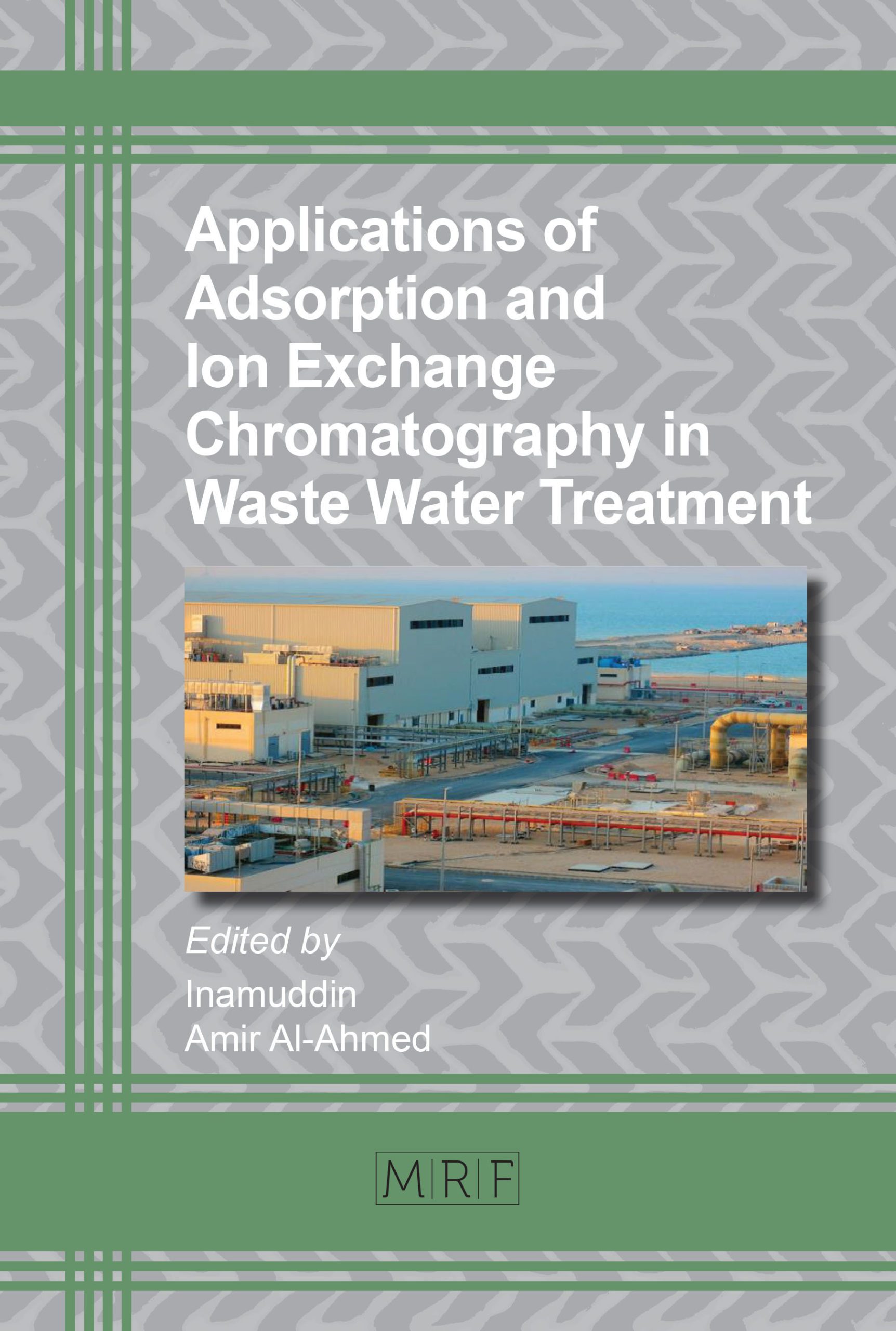Studies on different desalination processes turning sea water into drinking fresh water
Fakhra Jabeen, M. Sarfaraz Nawaz
Desalination is a practical way of making salty water drinkable and it is used widely around the world, especially in very dry countries and on ships and small islands. The process is quite expensive and it uses a lot of energy. It also produces a very concentrated waste stream of brine which has to be disposed of responsibly. For these reasons, it is generally applied as the last resource, implemented only when all other approches have failed. The most common, modern methods of desalination are thermal processes and reverse osmosis (RO). Although there is an increased trend to RO due to the advances in this technology in the last decade. Humans cannot drink seawater as it contains salt and is saline water. But, luckily saline water can be made into freshwater, so that there is enough water for drinking washing and growing crops and for everyday use. Many parts of the world such as dry desert areas simply do not have enough fresh water from surface water such as rivers, lakes. They have little rainfall and then it may only be seasonal. The scarcity of fresh water and the need for additional fresh water is already critical in many arid regions of the world and will be increasingly important in the future. It is very likely that the need for fresh water will soon be considered, in the same category as oil and energy resources, and to be one of the determining factors of world stability and the prosperity of nations. So a regular dependable supply of water is needed in these areas to enable them to have water to grow crops and build their countries to prosper. As our world populations grow we need to be able to guarantee this basic need and avoid any shortages of fresh water. The solution is to look to the abundant supply of sea water and turn salty water into fresh water for drinking.
Keywords
Desalination, Reverse Osmosis, Distillation, Pretreatment, Saline Water, Membrane Separation
Published online 4/25/2017, 48 pages
Copyright © 2016 by the author(s)
Published under license by Materials Research Forum LLC., Millersville PA, USA
Citation: Fakhra Jabeen, M. Sarfaraz Nawaz, ‘Studies on different desalination processes turning sea water into drinking fresh water’, Materials Research Foundations, Vol. 15, pp 107-154, 2017
DOI: http://dx.doi.org/10.21741/9781945291333-5
The article was published as article 5 of the book Applications of Adsorption and Ion Exchange Chromatography in Waste Water Treatment
References
[1] “Desalination”, The American Heritage Science Dictionary, Houghton Mifflin Company, via dictionary.com. Retrieved August 19, 2007.
[2] “Australia Aids China in Water Management Project.” People’s Daily Online, 2001-08-03, via english.people.com.cn. Retrieved August 19, 2007.
[3] M. Fischetti, Freshwater from the Sea, Scientific American 297 (2007) 118-119. doi:10.1038/scientificamerican0907-118. https://doi.org/10.1038/scientificamerican0907-118
[4] Desalination industry enjoys growth spurt as scarcity starts to bite; (https://www.globalwaterintel.com/desalination-industry-enjoys-growth-spurt-scarcity-starts-bite/ ).
[5] L. Henthorne, The Current State of Desalination, International Desalination Association. Retrieved 2012.
[6] http://economictimes.indiatimes.com/slideshows/nation-world/biggest-ocean-desalination-plant-in-california-nears-completion/slideshow/46932071.
[7] J. Pyper, Israel is creating a water surplus using desalination, EENews, February 7, 2014.
[8] G. P. Thiel, Salty solutions, Physics Today 68 (6) (2015) 66-67. https://doi.org/10.1063/PT.3.2828
[9] C. Fritzmann, J. Lowenberg, T. Wintgens, T. Melin, State-of-the-art of reverse osmosis desalination, Desalination 216 (2007) 1-76. doi:10.1016/j.desal.2006.12.009, 2007. https://doi.org/10.1016/j.desal.2006.12.009
[10] IAEA. The introduction of Nuclear Desalination. IAEA Technical Report Series No. 400, 2000.
[11] Desalination, a national perspective. National Research Council of the National Academies. 2008.
[12] M. Abu-Arabi, Status and prospects for solar desalination in the MENA region, Solar Desalination for the 21st Century, (2007) 163-178.
[13] C. Paton, P. Davies, The seawater greenhouse cooling, fresh water and fresh produce from seawater. In The 2nd International Conference on Water Resources in Arid Environments, Riyadh, 2006.
[14] L. García-Rodríguez, A. I. Palmero-Marrero, C. Gómez-Camacho, Comparison of solar thermal technologies for applications in seawater desalination, Desalination, 142(2) (2002) 135-142. https://doi.org/10.1016/S0011-9164(01)00432-5
[15] S. Kalogirou, Solar energy engineering: Processes and systems. Burlington, MA: Elsevier/Academic Press, 2009.
[16] R. Corfield, Close encounters with crystalline gas, Chemistry in Britain, 38 (5) (2002) 22-25.
[17] R. A. McCormack, R. K. Andersen, Clathrate desalination plant preliminary research study, U.S. Dept. of the Interior, Bureau of Reclamation, Water Treatment Technology Program Report 5, June 1995.
[18] L. M. Camacho, L. Dumee, J. Zhang, J-d Li, J. Gomez, M. Duke, S. Gray, Advances in Membrane Distillation for Water Desalination and Purification Applications: A review, Water 5 (2013) 94-196. doi: 10.3390/ w5010094. https://doi.org/10.3390/w5010094
[19] J. Crittenden, R. Trussell, D. Hand, K. Howe, G. Tchobanoglous, Water Treatment Principles and Design, Edition 2. John Wiley and Sons. New Jersey, 2005. ISBN 0-471-11018-3.
[20] T. A. Davis, Electrodialysis, in Handbook of Industrial Membrane Technology, M.C. Porter, Ed.), Noyes Publications, New Jersey, 1990.
[21] H. Strathmann, Electrodialysis, in Membrane Handbook, W.S.W. Ho, K.K. Sirkar, (Ed.), Van Nostrand Reinhold, New York, 1992.
[22] M. Mulder, Basic Principles of Membrane Technology, Kluwer, Dordrecht, 1996. https://doi.org/10.1007/978-94-009-1766-8
[23] T. Sata, Ion Exchange Membranes: Preparation, Characterization, Modification and Application, Royal Society of Chemistry, London, 2004.
[24] H. Strathmann, Ion-Exchange Membrane Separation Processes, Elsevier, New York, 2004.
[25] T. Peters, D. Pintó. Seawater intake and pre-treatment/brine discharge-environmental issues, Desalination 221 (2008) 576-84. https://doi.org/10.1016/j.desal.2007.04.066
































